《第二洞天》
- 2021-02-09 15:46:05
- 点赞量:6761
- 点击量:116107
- 作者:郝连成 Hao Liancheng
第二洞天
郝连成
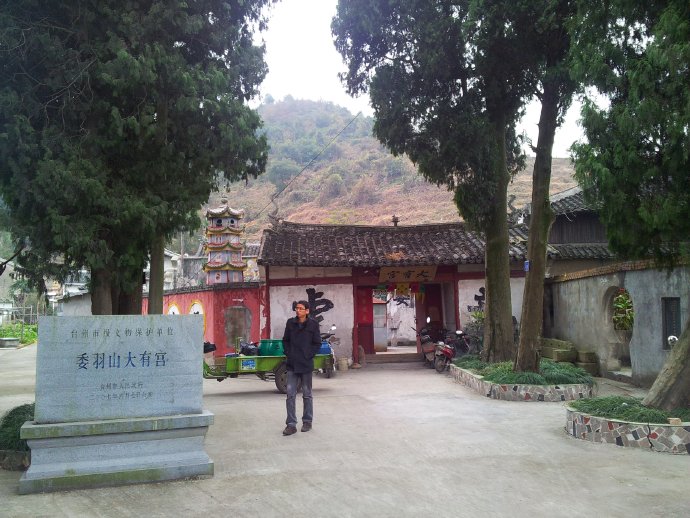
桔林墨绿,杜鹃粉红,道观绛紫,远天灰白。
吸着一路的桔花香味,程先生带我来到了委羽山脚下看这里的大有宫。大有宫是个道观,传说台州的道教就是在这里发源的。
委羽山座落在黄岩城关南,山下一个自然村叫羽村,通向村里路口的一座牌坊上写着“第二洞天”,题字的人落款任政。任政是本地人,当代著名书法家。
村子不大,家家办厂,主要生产儿童自行车和配件,从错落有致的小楼房建筑上可以看出这村子的富裕。
大有宫在村西的山窝,有三山屏围,翠竹拥抱,紫色大墙,飞檐高翘。新修的山门,大门两端车轮般的圆圈里画着象征八卦的阴阳鱼,象两只黑白分明的大眼晴瞪着山外。
绕进山门,东北朝向的角门上横悬一匾:大有宫。题匾时间是中华民国二十二年。
里边的建筑也都是那个时期的,墙面破损,门窗朽败,神象蒙尘。一个驼背的道人坐在一条三条腿的长凳上,呆望着墙角旧瓦檐下的那片粘着一个飞虫的蜘蛛网。听到我们进来的声音朝这边望了一眼,那目光分明透出了一种对我们凡夫俗子厌弃。
程先生介绍:这里几次失火,里边的东西都没有了,前几年来了个道长,想重振山门,道教协会也大力支持,筹了一些钱,修了迎面的山门。落成时把全国各地的道友请来不少,吃喝了好几天,香火也真的旺盛了好些日子,道士们都庆幸来了个好长门。谁知这长门也与时俱进,先是买了摩托车,后来又配上了能照象的手机。最后来又请来一个花枝招展的女秘书,说是帮助管账。也不知在哪个风清月朗的晚上,女秘书破了长门的童身,再后来他们就卷款而去,也不知到哪去双修双练了,留下了一堆欠施工队的滥账。听到这里我想起了一次在火车上听同卧铺的游客讲他在一个院寺的和尚室里看到很多壮阳补品的事来。不禁感慨:现在找一片净土真的很难呢。
程先生是这里的文化名人,画得一手好山水,书法也写得出色,当地很多匾额都是他手迹。在残破的“骑鹤观”,他指着檐前苍朴大气的观名匾额告诉我,这匾是他朋友潘观森题写的,潘观森也叫三木,是当地著名的书法家,永宁公园里那些大顽石上的景观题字凡是没落款的都是他的手笔。可惜去年得了喉癌已骑鹤仙去了。
看着这千年道观的残败,想到人生的无常,程先生现出了一种少有的凄然。
在一堆干树枝遮掩的墙角,被岁月吞噬得有些斑驳的石碑上记载着这个道观的兴衰。经过文化革命字迹模糊。看不出名堂,听程先生介绍:
两千多年以前,汉高祖刘邦的三太子刘奉林看这里水秀山青,东有九峰山输香送翠,北面永宁江平缓温柔,气盛物茂,白鹤成群,便来这里结庐炼丹。自号大有道人。一天,他梦到王母娘娘让他上天赴番桃盛会。就跨上一只白鹤飞天而去,白鹤飞起时落下了一根羽毛就化做了眼前这座羽山。此后这里就成了道家的盛地,香火也不断地兴旺起来,民国时的那个掌门人很有学问,喜欢书画,经常请各地名家来搞书画笔会,为保留那些书画专门建了个藏画阁,里边有很多名家作品,吴昌硕、蒲华的字画都收藏不少,可惜文化大革命时全都让造反派给扫“四旧”烧了,那些字画就烧了好几天。现在一幅吴昌硕的字画就好几十万。程先生脸上的那种可惜的神情没拍照下来真的让我可惜。
道观后院的山角下有一山洞,很是宽敞,能开进一辆吉普车,进洞几米远的地方供着吕洞宾的神象,烛光昏暗,有阴冷潮湿的感觉。再进几米有一铁栏挡住去路,栏里立石上写着:此洞可通东海,到那能见龙宫。
“真的。”程先生看我露出疑惑的神情告诉我。
“据说当年有个人想探一下这洞到底能通多远,就挑了一担蜡烛进去了,走啊走,一担蜡烛点没了,也没走到头,以后就再也没人进去过了。”
我看洞两边都是用方石砌成,长满苔藓。私下猜想可能是过去打仗时军队的通道,历史上方腊起义就在这里,戚继光抗击倭寇也在这里,或许是那时的遗迹吧。
说起这道观的文物老程说最值得一看的是这里一口大钟了,传说当年有两个小孩在江边,一个放牛,一个浇菜。一场大雨过后从江的上游漂下来两口大钟,浇菜的孩子就用舀粪的勺子边划水边喊:“过来,过来。”那钟竞呼呼悠悠顺水漂走了。另一个孩子则用赶牛鞭子喊“过来,过来。”第二口钟就顺从地漂了过来。
原来道家的祖先老子出函谷关骑青牛就是手摇鞭子的,那钟也通灵气,从此就留在了这里。遗憾的是那钟本来一雄一雌,漂走的那是雄钟,留下的是口雌钟。所以这里只能成为“第二洞天”了。程先生讲的很象民间故事,有些浪漫的色调。我看看眼前衰败下来的道观怎么也不能相信这里能是“第二洞天”。第一洞天在那里呢?当年的那口雄钟落在那里了吗?
天又来雨了,云头有些发暗。
临走,我又回头瞅瞅角门上的“大有宫”三个字心里嘀咕:刘邦的太子怎么起这么个俗气道名,人家都是什么“清风”“紫阳”“玄机”一类名,有点仙风道骨的感觉。
一天,偶然看《周易》原来“大有”是《易经》里的一个卦名,这卦成象是:乾下离上。卦辞曰:大有者,宽也,柔得尊位,官禄曰实。掩恶扬善,丰财和义,广纳包容,成物之美,自天佑之,无不吉利。
原来这“大有”一词还真的有些来头。只是这卦辞里透出的逐名求利的味道和道家所追求的清静无为境界有些相去甚远。
2007-4-24
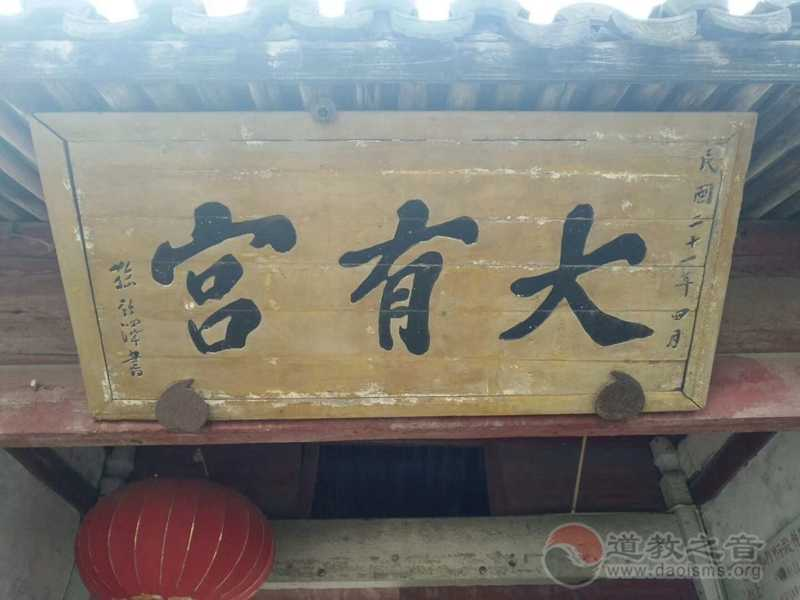
英文直译:
English literal translation:
The second cave
Hao Liancheng
The orange forest is dark green, the azalea is pink, the Taoist temple is purple, and the distant sky is gray.
With the smell of orange flowers, Mr. Cheng took me to the foot of Weiyu mountain to see the Dayou palace. Dayougong is a Taoist temple. It is said that Taoism originated here in Taizhou.
Weiyu mountain is located in the south of Huangyan City pass. There is a natural village called Yu village at the foot of the mountain. On a memorial archway leading to the intersection of the village, the inscription "the second cave" is written, and the person who inscribed the inscription signs down to take office. Ren Zheng is a local and famous calligrapher.
The village is not big. Every family runs a factory. It mainly produces children's bicycles and accessories. The richness of the village can be seen from the scattered small buildings.
Dayougong is located in the west of the village, surrounded by three mountains, surrounded by green bamboo, with purple walls and high eaves. The newly built Mountain Gate, with wheels like circles at both ends of the gate painted with Yin and yang fish symbolizing eight trigrams, looks like two big black and white eyes staring out of the mountain.
Around the mountain gate, a plaque is hung on the Northeast facing Corner Gate: Dayou palace. The plaque was inscribed in the 22nd year of the Republic of China.
The buildings inside are also of that period. The walls are damaged, the doors and windows are rotten, and the gods are covered with dust. A hunchback Taoist sat on a three legged bench, staring at the spider web under the old tile eaves in the corner. When we heard the voice coming in, we looked this way, which clearly showed a kind of disgust to us ordinary people.
Mr. Cheng said: there were several fires here, but there was nothing inside. A few years ago, a Taoist priest wanted to revive the mountain gate. The Taoist Association also strongly supported him and raised some money to repair the mountain gate. When it was completed, many Taoist friends from all over the country were invited to eat and drink for several days, and the incense really flourished for many days. Taoist priests were glad to come to a good long gate. Who knows this changmen also keeps pace with the times, first bought a motorcycle, and later equipped with a mobile phone that can take pictures. Finally, she invited a flamboyant female secretary to help manage the accounts. I don't know in which sunny night, the female secretary broke the long door of the child body, and then they will roll money away, also don't know where to double repair and double practice, leaving a pile of construction team debt. Hearing this, I think of a time when I was on the train listening to a tourist in the same berth tell me that he saw a lot of aphrodisiac tonics in the monk's room of a temple. I can't help feeling: it's really hard to find a pure land now.
Mr. Cheng is a famous cultural figure here. He has a good hand in landscape painting and calligraphy. Many local plaques are in his handwriting. In the dilapidated "Qihe Temple", he pointed to the simple and grand plaque in front of the eaves and told me that this plaque was written by his friend pan guansen, also known as Sanmu, who was a famous calligrapher in the local area. All the landscape inscriptions on the big rocks in Yongning park were written by him. It's a pity that I got laryngeal cancer last year and I've been riding crane fairy.
Looking at the decadence of this millennium Taoist temple and thinking of the impermanence of life, Mr. Cheng shows a rare sadness.
The rise and fall of this Taoist temple is recorded on a stone tablet covered by a pile of dry branches and covered by years. After the cultural revolution, the handwriting is blurred. I can't see the name of it. Listen to Mr. Cheng
More than 2000 years ago, Liu Fenglin, the Third Prince of Liu Bang, Emperor Gaozu of the Han Dynasty, saw the beautiful water and green mountains here. In the East, there were Jiufeng mountains to send incense and emeralds. In the north, Yongning River was gentle and gentle. It was full of vigor and luxuriant things. There were many white cranes, so he came here to make alchemy. There are many Taoists. One day, he dreamed that the queen mother asked him to go to the Peach Blossom Festival. Then he stepped on a white crane and flew away. When the white crane flew up, it dropped a feather and turned into the feather mountain in front of him. Since then, it has become a prosperous place for Taoism, and incense has been booming. The leader of the Republic of China was very knowledgeable and liked painting and calligraphy. He often invited famous artists from all over the world to hold painting and calligraphy meetings. In order to keep those paintings and calligraphy, he specially built a painting collection Pavilion. There are many famous works in it, including Wu Changshuo's and Pu Hua's paintings. Unfortunately, during the cultural revolution, they were all swept away by the rebels When the "old" was burned, the calligraphy and paintings were burned for several days. Now a painting by Wu Changshuo is hundreds of thousands. It's a pity that Mr. Cheng didn't take a picture of his face.
There is a cave at the foot of the mountain corner in the backyard of the Taoist temple. It is very spacious and can drive into a jeep. A few meters away from the cave, there is a statue of LV Dongbin. The candle light is dim and it feels cold and humid. A few meters further in, there is an iron fence blocking the way. The stone in the fence says: this cave can lead to the East China Sea, and you can see the dragon palace there.
"Really." Mr. Cheng looked at me with a puzzled look and told me.
"It's said that when someone wanted to find out how far the hole could go, he picked a load of candles and went in. Walking and walking, one load of candles was not lit, and it didn't come to the end. No one ever went in again."
I think both sides of the cave are made of square stones and covered with moss. Privately, I guess it might be the military passage in the war in the past. In history, fangla uprising was here, and Qi Jiguang's fight against Japanese pirates was also here. Maybe it was a relic of that time.
Speaking of the relics of this Taoist temple, Lao Cheng said that the most valuable thing to see is a big bell here. It is said that there were two children by the river, one herding cattle and the other watering vegetables. After a heavy rain, two big clocks floated down from the upper reaches of the river, and the child who watered the vegetables used the spoon to scoop the dung while rowing the water and shouting, "come here, come here." The clock floated away along the river. The other child yelled "come here, come here" with a whip The second clock drifted obediently.
It turns out that Lao Tzu, the ancestor of Taoism, went out to ride a green ox in Hangu pass by hand to shake the whip. The bell was also smart and stayed here ever since. It's a pity that the clock was originally a male and a female. It was the male clock that floated away, and the female clock was left behind. So it can only become "the second cave". What Mr. Cheng tells is very similar to folk stories, with some romantic colors. When I look at the declining Taoist temple in front of me, I can't believe that it can be "the second cave". Where is the first cave? Did the male clock fall there?
It's raining again and the clouds are darkening.
Before I left, I looked back at the three words "da you gong" on the corner gate and muttered in my heart: How did Liu Bang's prince get such a popular name? What are the names of "Qingfeng", "Ziyang" and "Xuanji"? It's a bit of a fairyland.
One day, I happened to see the book of changes. It turns out that Dayou is a hexagram name in the book of changes. The image of this hexagram is: Qian Xia Li Shang. The hexagram says: those who have great talent are generous and gentle, and the official salary is real. It is lucky for us to cover up the evil and promote the good, enrich our wealth and righteousness, be tolerant, and achieve the beauty of things.
It turns out that the word "Dayou" really has some origin. It's just that the taste of pursuing fame and fortune in this hexagram is quite different from the realm of quietness and inaction pursued by Taoism.
2007-4-24
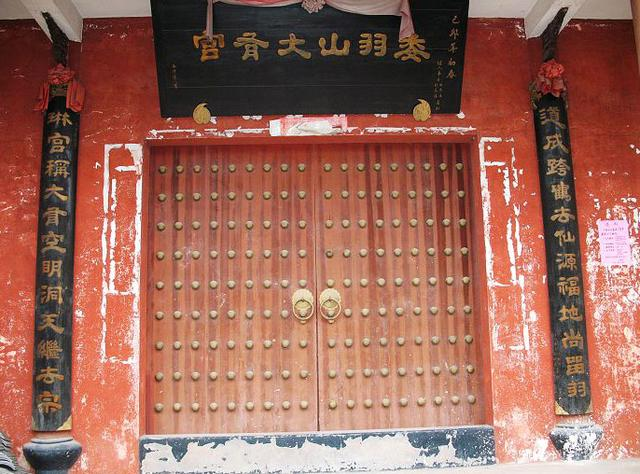


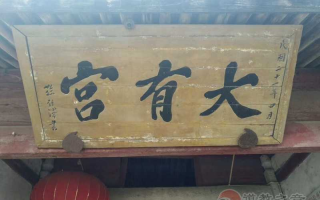
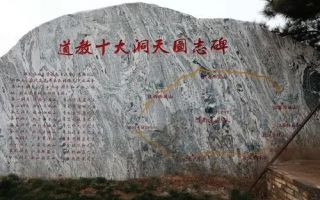
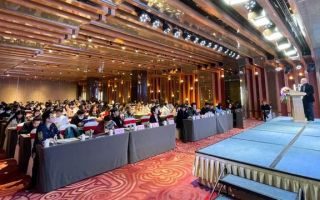
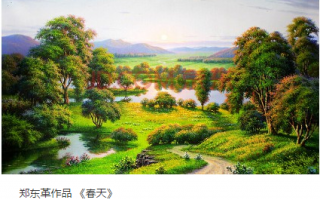

雁在蓝天